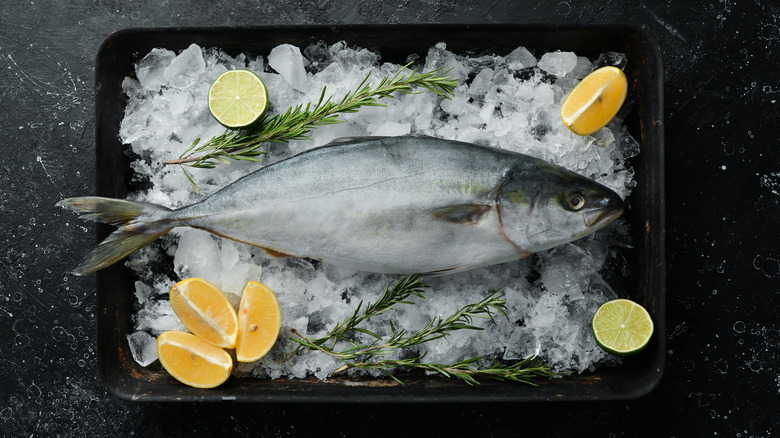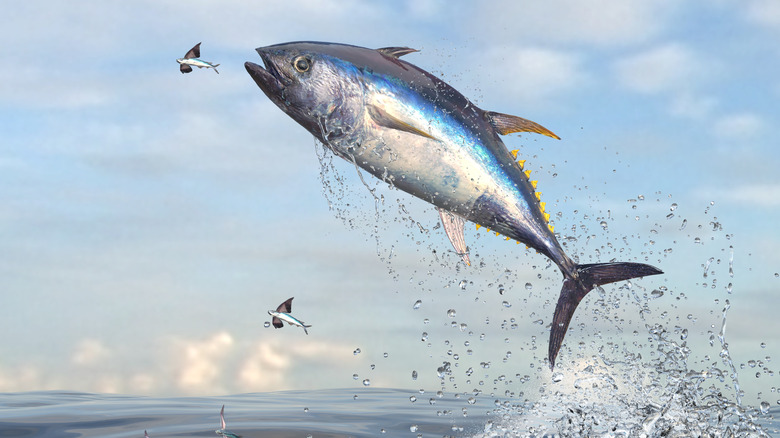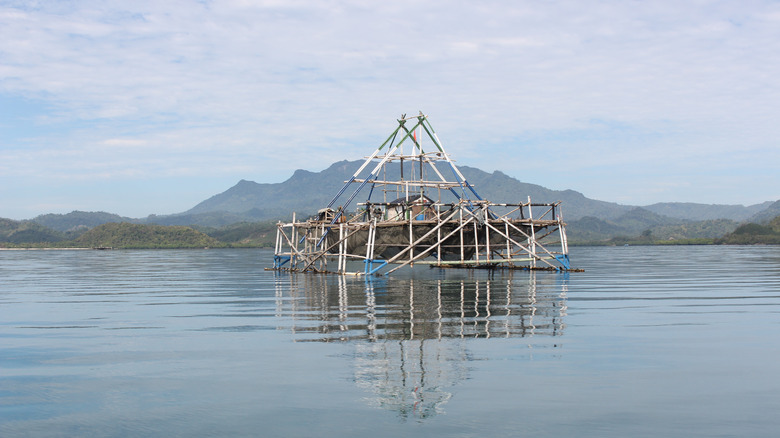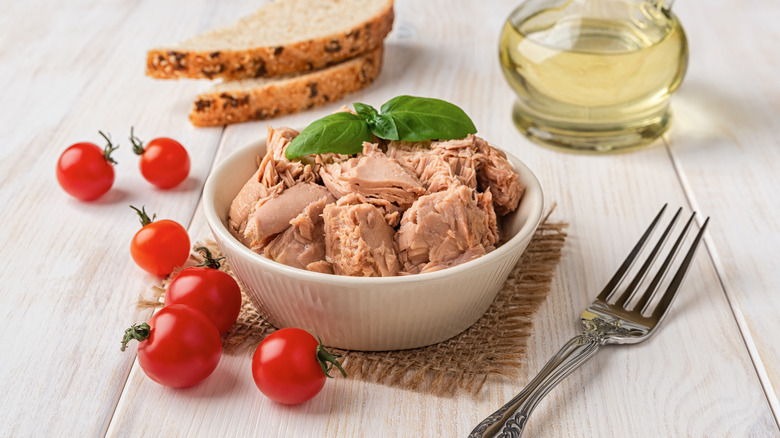What Is Troll-Caught Tuna And Is It Sustainable?
Over the years, the tuna shelf at the grocery store has gone from stacks of that familiar blue and white labeled tin with a name fit for a jar of honey, to a whole section. Everything from fish packed in high-quality oils to low-sodium levels to gourmet tinned variations to pouches has taken over the aisle. That familiar can from childhood shares space with a myriad of variations of the lunchbox staple.
Along with those new tinned and jarred varieties has come an onslaught of new labels to decipher. One of the labels eco-conscious consumers pay attention to is the method by which the fish was captured. Tuna has seen a sharp decline in population, and the traditional methods of catching them result in quite a bit of harmed and wasted marine life as well as pollution to our oceans. Dolphin-safe gets thrown around quite a bit but offers no insight into the sustainability of the brand of tuna.
Troll-caught tuna is a sustainable method and worth keeping an eye out for on labels. What exactly is it, and how does it differ from other tuna fishing techniques?
What is troll-caught tuna?
Troll-caught tuna is a method of catching tuna fish that is done exactly as it sounds — by trolling. The premise of trolling involves luring the fish to the surface near the boat to eat. This is done by painting a picture of the shadow of the boat as a large group of tightly packed fish and artificial. Artificial lures are added trailing behind it, and the tuna will see those small individual baits, such as squid, trying to get back to the large school of fish.
The tuna view this situation as an easy opportunity to have some dinner and come after the lures they think are smaller fish. At this point, they're right at the surface and edge of the boat, and the fishermen can easily bring them onboard. The boat typically moves slowly, and the lures are set in a "V" pattern trailing behind the boat. Trolling is considered to be a responsible, environmentally friendly method for catching fish as there is minimal bycatch or sea life that gets caught in nets and wasted.
Troll-caught tuna are mostly albacore and inhabit the Pacific Ocean. The fish gathered via this method are younger and much smaller than fully-grown albacore. Larger, older tuna tend to stay deeper toward the bottom of the ocean. Juvenile tuna caught during trolling is around three to five years of age and average about 20 pounds.
Other methods of catching tuna
Commercial tuna is usually caught using FADs (fish aggregating devices). FADs are man-made floating structures that attract fish by using nets to catch small marine life. They are either free-floating or anchored. The downside to this method is that the sea life used to lure the tuna often gets left for dead. In addition, larger sea animals, called bycatch, often get tangled in the nets. Turtles and dolphins are some of the species that can get injured or possibly killed.
There are a handful of other sustainable methods of catching tuna. Living hand-in-hand with troll-caught tuna in terms of minimizing bycatch is pole-caught and pole-and-line-caught. Both methods are exactly as they sound as well — the tuna is caught with a fishing pole and line, targeting one fish at a time and leaving the other marine life out of harm's way.
Other methods that do not involve FADs are FAD-free, school-caught, and free school. All three use a purse seine or a large net. Without the use of a FAD with the net, less marine life gets caught. While these techniques do mitigate the risk of bycatch, they also contribute to ocean pollution. Discarded nets from commercial fisheries are commonplace in the ocean; however, some fisheries are using biodegradable and non-entangling nets to help reduce this number.
Nutritional benefits of troll-caught tuna
Because the tuna caught at the surface via the troll-caught method is younger and smaller, the meat has more omega-3 fatty acids than that of older tuna. Omega-3 fatty acids have been linked to a myriad of health benefits, including preventing heart disease and stroke, per Harvard Health. In fact, troll-caught tuna can contain up to three times the amount of Omega-3s as their fatty-fish counterparts.
According to a study in the Journal of Aquatic Food Product Technology, troll-caught tuna also contains less mercury than other tuna (via Taylor & Francis Online). The younger the fish, the fewer times it's been out in the ocean consuming contaminants and partaking in the food chain.
In addition to the heart-healthy fatty acid composition and purity of the meat, tuna as a whole is an excellent source of protein while being low in calories and fat, notes Healthline. It's also a good source of vitamins and minerals such as magnesium, potassium, and B vitamins.



